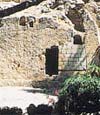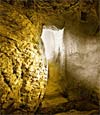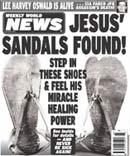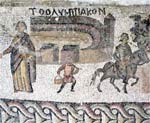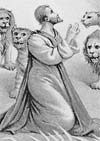Christian 'Apologetics' – Fundamentally flawed
The supposed ‘evidence’ of Jesus’s existence can fill many pages. The $multi-billion industry of religion quite predictably has its lionized defenders of the Faith. Two favourites of the Born Again are pastor Lee Strobel – The Case For Christ – and minister Josh McDowell – Evidence that Demands a Verdict. Neither pretends to a scientific impartiality. Beyond a self-claimed ‘hard-nosed objectivity’ they make an avowedly partisan case for their evangelist cause. But for all the fulsome praise heaped upon contemporary apologists by a grateful Christ Incorporated the evidence of their case collapses under scrutiny. The sophistry and flimflam deceive only the gullible and the uninformed – but, then, that is the essence of religion.
Deceiving the Unsophisticated by Trickery
In the prelude to the Dark Ages the original Christian Apologists engaged in a similar pseudo-rational debate with the Greek philosophers, who at first ignored the Christians and subsequently lampooned them as fools. But within three generations the fanatics of Christ had taken over the Roman Empire and the laughing stopped.
1. The "Bible Says So" Argument
Believe it or not, in a jaw-dropping departure from logical thinking, the Apologists’ prime source of ‘proof’ for the existence of their storybook hero is the storybook itself. The Bible is given the special privilege of confirming its own truth. In the language of religious deceit, the Bible is held to be “unique” and “historically reliable”. It’s true because it says it’s true. Handy, that. (So handy, in fact, that Muhammad used the same “logic” in the Koran).
Can this chicanery be remotely justified because scripture gives accurate chronologies and verifiable descriptions of people, places and events? Not at all. Like any book of fiction the Bible sets a series of (unlikely) events, a plethora of names, and a mass of incidental but uncheckable detail, into a more or less known historical setting. Roman Judaea was real enough. 1st century Jerusalem certainly existed (you can visit the ruins). But any work of historical fiction makes reference to the real world. A novel does not cease to be fiction no matter how “believable” it becomes.
With the whole compendium of biblical half-truths, fantasy and garbled history defined as “historical evidence”, vast numbers of “witnesses” to the Jesus superhero can be mustered. Other characters in the fable give testimony for the existence of the holy carpenter. This is rather like ‘proving’ the existence of Batman by quoting the words of Robin the Boy Wonder.
The divine birth? We have Luke’s testimony of shepherds and angels (Luke 2). Never mind that Luke is writing at least 60 years after the supposed birth of the godman (in reality, more like a century), he steps forward as witness to verbatim nocturnal dialogue in a sheep field.
Jesus turning water into wine? Why, here we have the apostle John as our key (indeed, only) witness, writing even longer after the event than fellow storyteller Luke (John 2). At best, John, like Luke, is repeating hearsay and doing so a lifetime after the alleged incident.
And just who do we have to vouch for the messiah’s grand finale, the resurrection? Evidence for the ‘risen Christ’ comes from Paul’s testimony of “500” unidentified witnesses, sightings by the 12 apostles and himself (1 Corinthians 15). Matthew instead has 2 feet-worshipping women and 11 disciples on a mountainside. Mark brings forward 3 women (Mary Magdalene, Mary the mother of James, and Salome), 2 walkers and the 11 having their lunch (Mark 16). And finally John also cites Mary Magdalene and the disciples, with special mention of doubting Thomas (John 20).
Perhaps by this point the assumption is that all critical thinking would have ceased and another acolyte be on his knees in penitence for ever doubting the revealed truth.
2. The "Belief of Others is Evidence" Argument
Having marshalled cut-out characters from the story itself as “witnesses”, the suspect logic continues by bringing on as additional “witnesses” the massed ranks of the brethren – well, a few isolated individuals actually.
Early Christians are themselves presented as “evidence.” Thus the recorded beliefs of Church Fathers such as Ignatius, bishop of Antioch (50-115?), become the lynchpin of Roman Catholicism’s claim for world mastery. In an impressively entertaining tale of martyrdom and celebrity tour, the episcopal superstar gets sentenced to wild beasts by the dastardly Emperor Trajan (in truth, a famously benign ruler).
We are asked to believe that, at a time when all of Rome’s resources were being assembled for a war against Parthia, the emperor eschewed the perfectly serviceable local arena for Ignatius’s execution and instead, assigned a troop of guards to traipse their captive the long way round the eastern empire and back to Rome. The protracted journey afforded Ignatius the opportunity to meet and greet Christian worthies every step of the way. Along the journey, Ignatius (who is quite insistent upon his own martyrdom) writes 15 letters of a truly miraculous nature. They are addressed to such diverse notaries as the Virgin Mary and a bishop not even born at the time of Ignatius’s death!
The importance of the letters is not historical veracity but Catholic dogma. Ignatius is turned into the mouthpiece of 4th century Orthodoxy, back-dated into a 2nd century proselytising fantasy. The obliging bishop warns the brethren of all-manner of “heresies” and urges rigid obedience of their bishops.
In the fable in which he is made bishop by the apostles themselves and then himself instructs bishop Polycarp of Smyrna (died 166?), Ignatius is made the “missing link” between the Palestinian pageant and the reality of Catholic episcopal authority. The first Roman cleric to identify himself as bishop – Anicetus (156-166) – did so in correspondence with Polycarp.
Similarly, Flavius Clements (?150-216) bishop of Alexandria, Justin (such a meritorious “martyr” it becomes part of his name), and Gallic bishop Irenaeus are selectively quoted, as if their beliefs had some special quality in proving the life and death of someone a century or more before their own time.
Simply put, evidence of belief is not evidence of reality – and if that line of argument had any validity it would better validate the 3000 plus years of Egyptian and Indian deities, and the almost as long-lived Gods of Greece and northern Europe!
The deceit is continued into the present day, with testimony from “expert believers” showcased as evidence for a godman whose existence was questioned even in the 2nd century. Testimony from equally expert non-believers, of course, is not forthcoming.

Evidence of Belief – the tombs of the Sacred Ibis at Saqqara, Egypt
3. The "Suffering Disciples" Argument
This one really takes the biscuit. Our Apologist, aware that non-Christians also have beliefs, now inflates a fallacy, invented by a triumphant Church and perpetuated by Hollywood. “Would the disciples have suffered and died for a fabricated saviour?” (Lurid pictures of stoning, beheading, savage beasts).
This audacious nonsense is destroyed utterly by two separate realities:
1. People suffer and die all the time for erroneous causes.
Did the 9/11 terrorists go straight to the Islamic paradise?
Pagans died at the hands of Christians. Did this prove the existence of Isis and Dionysus?
2. There is NO evidence at all for the existence of the Apostles and NO evidence for widespread suffering by Christians either – until, that is, the Christian Empire turned its ferocity upon the heretics.
Paul, for example, nowhere refers to the execution of a single apostle, though that does nothing to diminish the often reiterated tall tale of Nero’s “torching” of Christians.
Let’s not forget, in a single day in 1209 at Beziers in the Languedoc region of southern France, more Christians died at the hands of fellow Christians than in the entire twenty year reign of the ‘great persecutor’ Emperor Diocletian – graphic evidence of Christian rather than pagan savagery. One can kill for, and die for, religion with equanimity and people usually do.
Religion-inspired death and murder proves nothing.
4. The "Too Soon For a Legend" Argument.
Nonetheless, the implication is that within a decade or two of JC’s death “numerous” Christians all had more or less the same conviction. “Surely,” runs the argument, “this would only be the case if something truly remarkable had occurred?”
Wrong.
Let’s remind ourselves: we are looking for evidence of JC. That doesn’t mean we assume a specific date for a crucifixion of our hero and then count off to a time when there were Christians. No one doubts that a messianic godman faith emerged sometime in the late 1st/early 2nd century. The legend is a composite construct over many generations. Its emergence from the very real suffering of the Jews and the dispossessed of the Roman Empire is a fascinating study.
5. The "Sheer Quantity of Documentation" Argument
6. The "Embarrassing Errors" Argument
7. The "NO Credible Historians" Argument
This is it. The best evidence for believing in a resurrected Jesus.
Five 3rd-hand anecdotes of "sightings" !
And you thought the evidence for WMDs was a bit thin .
“To judge from the Gospels, it would seem that the activities of the risen Jesus during the forty days after he died included: one breakfast; one and a half dinners; one brief meeting in a cemetery (in fact with his clothes off); two walks through the countryside; at least seven conversations ...
And that he was seen of Cephas, then of the twelve:
After that, he was seen of above five hundred brethren at once; of whom the greater part remain unto this present, but some are fallen asleep.
After that, he was seen of James; then of all the apostles.
And last of all he was seen of me also, as of one born out of due time.
And when she had thus said, she turned herself back, and saw Jesus standing, and knew not that it was Jesus. Then the same day at evening, being the first day of the week, when the doors were shut where the disciples were assembled for fear of the Jews, came Jesus and stood in the midst, And after eight days again his disciples were within, and Thomas with them: then came Jesus, the doors being shut, and stood in the midst,
- And it came to pass, that, while they communed together and reasoned, Jesus himself drew near, and went with them.
- But their eyes were holden that they should not know him.
- And they drew nigh unto the village, whither they went: and he made as though he would have gone further.
- But they constrained him. And he went in to tarry with them.
- And it came to pass, as he sat at meat with them, he took bread, and blessed it, and brake, and gave to them.
- And their eyes were opened, and they knew him; and he vanished out of their sight. And as they thus spake, Jesus himself stood in the midst of them,
- But they were terrified and affrighted, and supposed that they had seen a spirit.
- And when he had thus spoken, he shewed them his hands and his feet.
- And while they yet believed not for joy, and wondered,
- And they gave him a piece of a broiled fish, and of an honeycomb.
- And he took it, and did eat before them. And he led them out as far as to Bethany, and he lifted up his hands, and blessed them.
- And it came to pass, while he blessed them, he was parted from them, and carried up into heaven.
And as they went to tell his disciples, behold, Jesus met them. And they came and held him by the feet, and worshipped him.
Then the eleven disciples went away into Galilee, into a mountain where Jesus had appointed them.
And when they saw him,they worshipped him: but some doubted. And Jesus came and spake unto them.
MARK 16
Now when Jesus was risen early the first day of the week, he appeared first to Mary Magdalene, out of whom he had cast seven devils.
And she went and told them that had been with him, as they mourned and wept. After that he appeared in another form unto two of them, as they walked, and went into the country.
And they went and told it unto the residue: neither believed they them.
Afterward he appeared unto the eleven as they sat at meat, and upbraided them with their unbelief and hardness of heart, because they believed not them which had seen him after he was risen. So then after the Lord had spoken unto them, he was received up into heaven, and sat on the right hand of God.
Doomed, says Bishop
– Bishop John Shelby Spong (Resurrection: Myth or Reality? A Bishop’s Search for the Origins of Christianity, p 238).
Sources:
- C.S. Lewis, Mere Christianity (Fontana, 1955)
- C.S. Lewis, The Screwtape Letters (Fontana, 1955)
- Josh McDowell, Evidence that Demands a Verdict (Nelson, 1999)
- Gary Habermas, The Verdict of History (Monarch, 1990)
- Lee Strobel, The Case For Christ (Zondervan 1998)
- Lee Strobel, The Case for Faith (Zondervan 2000)
- M. Marty, R. Scott Appleby, The Glory & The Power (Beacon, 1992)
- Philip Sampson, Six Modern Myths Challenging Christian Faith (IVP, 2000)
- The Apostolic Fathers, Early Christian Writings (Penguin, 1968)
- Gore Vidal, Armageddon? Essays 1983-1987 (Andre Deutsch, 1987)
Related Articles:
- Would they lie? – Copy and Glorify!
- Non-Christian Testimony? – From the authentic pen of lying Christian scribes !!
- Shrouded in Deceit – Leonardo’s Last Laugh
- The “James Ossuary” – A Box of Tricks
- “Saint George” – The Pork Salesman who became England’s Patron Saint
- “Saint Peter” – Linking Rome back to the Godman


Find the Jesus!

A Professor Speaks..
“This argument is valueless since the evangelists demonstrably shared so much material from common sources.”
"Evidence? We have evidence by the yard.."
“Let’s take the more than 500 witnesses who saw Jesus alive after His death and burial, and place them in a courtroom.
Do you realize that if each of those 500 people were to testify for only six minutes, including cross-examination, you would have an amazing 50 hours of firsthand testimony?”
Jesus the Triplet?

Speaking of gross –
Wild Beasts!
Wise Men from the East?




Lorem ipsum dolor sit amet, consectetur adipiscing elit. Ut elit tellus, luctus nec ullamcorper mattis, pulvinar dapibus leo.
Lorem ipsum dolor sit amet, consectetur adipiscing elit. Ut elit tellus, luctus nec ullamcorper mattis, pulvinar dapibus leo.


